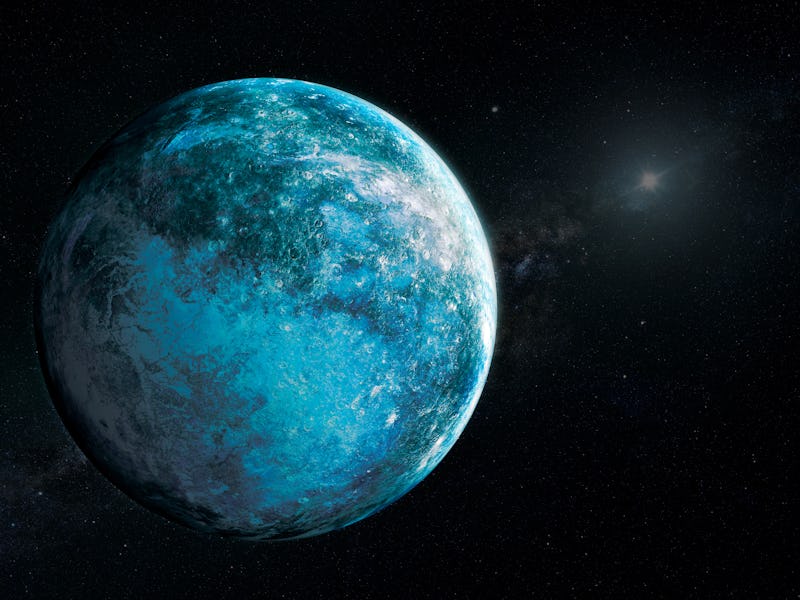Mysterious “Planet Nine” May Actually Be a Missing Earth-sized World
A recent study proposes a totally different version of Planet Nine, but which one is really out there?

According to a recent study using computer simulations, Planet 9 is out there — and it’s smaller and more like Earth than you probably expect.
Planetary scientists Patryk Sofia Lykawka of Kindai University and Takashi Ito of the National Astronomical Observatory of Japan used computer simulations to model how the rocky, frozen little worlds of the Kuiper Belt could have ended up in their current orbits, and it turns out that the best explanation is an unseen, undiscovered planet slightly larger than Earth, orbiting somewhere between 250 and 500 times farther from the Sun than our temperate planet. They published their work in The Astrophysical Journal.
The Kuiper Belt is populated by dwarf planets like Quaoar, shown in this illustration, and smaller chunks of rock and ice.
Something Strange is Afoot in the Kuiper Belt
Far beyond the orbit of Neptune, in the outermost reaches of our Solar System, hundreds of thousands of tiny, frozen worlds drift through the darkness. The Kuiper Belt objects are like time capsules from the ancient Solar System, and their orbits can reveal how the giant planets — Jupiter, Saturn, Uranus, and Neptune — moved through the early Solar System and settled into their current orbits. And some of those orbits are weird enough to demand explanation.
In 2016, astronomers Mike Brown and Konstantin Batygin announced a hypothesis for how a dwarf planet called Sedna and several objects like it came to have similar strange, elongated orbits that all cluster near the same point in space: a planet about half the mass of Neptune on the outskirts of our Solar System pulling their orbits in weird directions. Called Planet Nine, the hunt has since ensued for the elusive world.
But Lykawka and Ito say Brown and Batygin’s version of Planet 9 doesn’t account for all the weirdness going on with Kuiper Belt objects’ orbits, just the group whose orbits have been tilted at the same strange angle. Other scenarios — like an Earth-sized planet, carelessly shoved aside by one of the wandering giant planets, which in turn nudged a few Kuiper Belt objects on its way out of the Solar System — also don’t explain all of the orbital resonances, weirdly distant objects, and tilted orbits we see in the Kuiper Belt today.
In Lykawka and Ito’s simulations, only one scenario that explained all of the complex goings-on in the Kuiper Belt: a planet closer to Earth’s mass, around 250 to 500 times Earth’s distance from the Sun. According to Lykawka and Ito’s simulations, the best explanation is an unseen, undiscovered planet about 1.5 to 3 times as massive as Earth, orbiting somewhere between 250 and 500 times as far from the Sun: it’s Planet 9, but not the version other scientists have been looking for.
It will take more than computer simulations to prove that Planet 9 exists, let alone reveal its size or its path around the Sun. The best option would be to actually spot the world lurking on the edges of our system, but it’s likely to be so small and so distant from the Sun that the chances of it being visible are, well, astronomical. (However, some observatories like the Vera Rubin Observatory might be able to find such a world, but not without a lot of effort.) Instead, Lykawka and Ito, as well as Brown and Batygin, are on the right track; we’ll most likely find Planet 9 by tracking its unseen influence on the small icy worlds around it.
“More detailed knowledge of the orbital structure in distant Kuiper Belt can reveal or rule out the existence of any hypothetical planet in the outer Solar System,” write Lykawka and Ito in their recent paper.